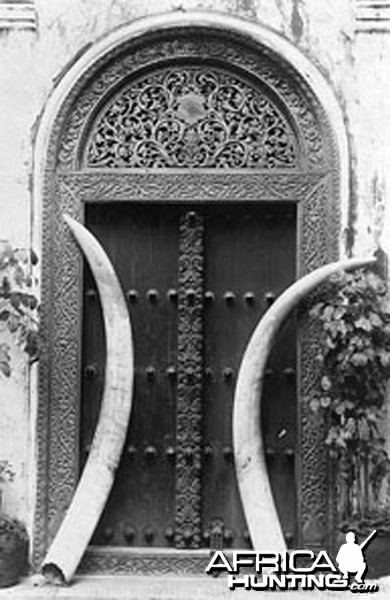grand veneur
AH legend
Estimating the weight of an elephant tusk from its size is only possible within the particular population of a given area, and in this case we are not even sure if it's a savanna or a forest elephant.
So how does your calculator work?
I estimate the circumference at the lip at 17"
It is in the Kruger SA....no forest elephants hereEstimating the weight of an elephant tusk from its size is only possible within the particular population of a given area, and in this case we are not even sure if it's a savanna or a forest elephant.
And no deduction or compensation for thin Ivory?(Diameter” at lip x 3 x feet of exposed ivory)*.914
The multiplier to account for root weight and adjustment to Pi.
In this instance, 6” at lip, 6’ of ivory. Pretty close to your circumference measurement …. 108# wet weight.
And no deduction or compensation for thin Ivory?
Look at Dzombo...
19.68 (almost 3 inches more) diameter tusks almost 8 feet in length(2 feet more than your over estimation) weight 122 pounds and compare to this thin tusked bull....and tell me me he is only 20lbs more than the bull in question?
Luckily you are not a DG ph telling the client this is a hundred pounder as you would be out of a job before you started.....
It is in the Kruger SA....no forest elephants here
Very cool but sad. Good news about his descendants. It’s a shame his death won’t profit anyone or his kind. I may be wrong but can you even hunt trophy elephant in Tanzania? Thanks for sharingThis Monarch of Amboseli died today at age 51, due to an infection from a spear wound suffered while raiding a families garden. The good news, he is past breeding age and his dna has been spread through out Amboseli, Chyulu Hills and Tsavo West. Iconic photo with Hans Meyer and Uhuru in the background.
View attachment 530664
Very cool but sad. Good news about his descendants. It’s a shame his death won’t profit anyone or his kind. I may be wrong but can you even hunt trophy elephant in Tanzania? Thanks for sharing
Holy crap. Estimate on weight??A Bull I photographed in 2020, then again just a few weeks ago. He roams in the greater Kruger of South Africa mostly.
View attachment 601885
View attachment 601886
I figured it had to be getting up there. You said Greater Kruger, one of the APNRs?I estimate around 110 pounds, possibly more
It seems that there are mixed stories on the provenance of this world's record pair of Elephant tusks...

World's Record Pair of Tusks (235 lbs. and 226 lbs.)
A person from Holland and Holland claims that the tusks had been found, since there was no record of whether the bull had been killed or had died from natural death. The person writing for the museum stated that the ivory was taken by a hunter, it is said that they came from an Elephant killed near Kilimanjaro by an Arab hunter after he had been trailing it for several weeks. Another person claims that the bull was killed on the mountain but not by whom. It is also said that the body size of the tusker was not large and that the Elephant was shot by a native hunter who used an old muzzleloader rifle. A book by a Spanish professional hunter and writer claims that there were also two separate Elephants, the biggest a single tusker, killed by an Arab hunter, whose tooth weighed 235 lbs. when taken in 1899 and a pair of tusks now in the British Museum, which weighed 235 and 226 lbs. fresh. According to the Spaniard, the tusker was taken by an Arab hunter named Senoussi who worked for the slave trader Tippoo Tib, also on Mt. Kilimanjaro.
Mr. Humble, the dealer himself, supplied this photograph of the tusks when they were still together in Zanzibar in 1899.
The known history of the ivories themselves is well documented after their original sale. After the tusks were cut out, they were caravanned to east Zanzibar. An American firm bought them and shipped them to Landsberger, Humble & Company in England where they were seperated. The larger tusk was purchased by the British Museum at an unmentioned date for 350 British pounds, quite a bargain. The smaller tusk was sold to the famous cutlery firm of Joseph Rodgers and Sons, Ltd., in Sheffield, England.
After many years the tusks were at last reunited, acquired by the British Museum through Rowland Ward. The ivory was on public display until about 1973 when it was removed to the security storage area in the museum's basement where it is still to be found. The Natural History Museum is apparently most cooperative in arranging a showing for interested sportsmen.
A Bull I photographed in 2020, then again just a few weeks ago. He roams in the greater Kruger of South Africa mostly.
View attachment 601885
View attachment 601886